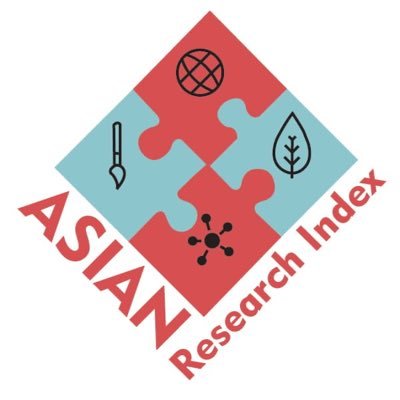Effects of Resistance Training on Blood Pressure and Dyspnea in Post-Myocardial Infarction Patients
DOI:
https://doi.org/10.55735/xvg4vg78Keywords:
Blood pressure, Cardiac rehabilitation, Dyspnea, Myocardial infarction, Resistance trainingAbstract
Background: Myocardial infarction is a major cause of morbidity and mortality, often leading to elevated blood pressure and dyspnea, which hinder recovery. While aerobic exercise is a key component of cardiac rehabilitation, the role of resistance training remains underexplored. Objective: To evaluate the effects of resistance training on blood pressure and dyspnea in post-myocardial infarction patients. Methodology: A cross-sectional analytical study was conducted, including 133 post-myocardial infarction patients, selected through non-probability convenience sampling from the Punjab Institute of Cardiology, Omar Hospital and Cardiac Centre, Jinnah Hospital Lahore, and Mayo Hospital Lahore. Individuals in post-MI recovery, at least three months after diagnosis, aged between 30 to 80 years, both males and females, were recruited in the study. Patients with severe comorbidities, recent myocardial infarction or cardiac events, and those with uncontrolled hypertension or other cardiovascular disease were excluded. After that, written informed consent was obtained from all the participants. Demographic data and resistance training habits were collected using a structured questionnaire. Baseline blood pressure was measured in a seated position at rest using a digital sphygmomanometer, while dyspnea levels were assessed using the Modified Borg Dyspnea Scale. Descriptive statistics summarised categorical variables (like gender, resistance training participation) using frequencies and percentages, while continuous variables (like age, blood pressure, dyspnea scores) were expressed as mean and standard deviation. Independent sample t-tests were performed to compare mean values of systolic and diastolic blood pressure and Borg Scale scores between participants. Results: The resistance training group showed significantly lower blood pressure (resting systolic: -5.40 mmHg, diastolic: -3.29 mmHg; post-activity systolic: -4.37 mmHg, diastolic: -3.70 mmHg; p<0.001). Dyspnea scores were also significantly reduced (rest: -1.11, ADLs: -1.97, exertion: -1.97; p<0.001). Effect size analysis indicated a large impact of resistance training on both outcomes. Conclusion: Resistance training significantly reduces blood pressure and dyspnea in post-myocardial infarction patients, supporting its inclusion in cardiac rehabilitation.
Downloads
References
1. Bøtker MT, Stengaard C, Andersen MS, Søndergaard HM, Dodt KK, Niemann T, et al. Dyspnea, a high-risk symptom in patients suspected of myocardial infarction in the ambulance? A population-based follow-up study. Scandinavian Journal of Trauma, Resuscitation and Emergency Medicine. 2016;24:1-9.
2. Pedrinelli R, Ballo P, Fiorentini C, Denti S, Galderisi M, Ganau A, et al. Hypertension and acute myocardial infarction: an overview. Journal of Cardiovascular Medicine. 2012;13(3):194-202.
3. Xing Y, Yang S-D, Wang M-M, Feng Y-S, Dong F, Zhang F. The beneficial role of exercise training for myocardial infarction treatment in elderly. Frontiers in Physiology. 2020;11:270.
4. Mcleod JC, Currier BS, Lowisz CV, Phillips SM. The influence of resistance exercise training prescription variables on skeletal muscle mass, strength, and physical function in healthy adults: An umbrella review. Journal of Sport and Health Science. 2024;13(1):47-60.
5. Fuchs FD, Whelton PK. High blood pressure and cardiovascular disease. Hypertension. 2020;75(2):285-92.
6. Hossein Pour AH, Gholami M, Saki M, Birjandi M. The effect of inspiratory muscle training on fatigue and dyspnea in patients with heart failure: A randomized, controlled trial. Japan Journal of Nursing Science. 2020;17(2):e12290.
7. Salari N, Morddarvanjoghi F, Abdolmaleki A, Rasoulpoor S, Khaleghi AA, Hezarkhani LA, et al. The global prevalence of myocardial infarction: a systematic review and meta-analysis. BMC Cardiovascular Disorders. 2023;23(1):206.
8. Smit M, Coetzee A, Lochner A. The pathophysiology of myocardial ischemia and perioperative myocardial infarction. Journal of Cardiothoracic and Vascular Anesthesia. 2020;34(9):2501-12.
9. Boeno FP, Ramis TR, Munhoz SV, Farinha JB, Moritz CE, Leal-Menezes R, et al. Effect of aerobic and resistance exercise training on inflammation, endothelial function and ambulatory blood pressure in middle-aged hypertensive patients. Journal of Hypertension. 2020;38(12):2501-9.
10. Liao W-h, Chen J-w, Chen X, Lin L, Yan H-y, Zhou Y-q, et al. Impact of resistance training in subjects with COPD: a systematic review and meta-analysis. Respiratory care. 2015;60(8):1130-45.
11. Paluch AE, Boyer WR, Franklin BA, Laddu D, Lobelo F, Lee D-c, et al. Resistance exercise training in individuals with and without cardiovascular disease: 2023 update: a scientific statement from the American Heart Association. Circulation. 2024;149(3):e217-e31.
12. Chen K-C, Hsu C-N, Wu C-H, Lin K-L, Chen S-M, Lee Y, et al. 2023 TAMIS/TSOC/TACVPR Consensus Statement for Patients with Acute Myocardial Infarction Rehabilitation. Acta Cardiologica Sinica. 2023;39(6):783.
13. Grochulska A, Glowinski S, Bryndal A. Cardiac rehabilitation and physical performance in patients after myocardial infarction: Preliminary research. Journal of Clinical Medicine. 2021;10(11):2253.
14. Camanni G, Ciccone O, Lepri A, Tinarelli C, Bedetti C, Cicuttin S, et al. ‘Being disabled’ as an exclusion criterion for clinical trials: a scoping review. BMJ Global Health. 2023;8(11):e013473.
15. Fakolade A, Bisson EJ, Pétrin J, Lamarre J, Finlayson M. Effect of comorbidities on outcomes of neurorehabilitation interventions in multiple sclerosis: a scoping review. International Journal of MS Care. 2016;18(6):282-90.
16. Members WC, Lawton JS, Tamis-Holland JE, Bangalore S, Bates ER, Beckie TM, et al. 2021 ACC/AHA/SCAI guideline for coronary artery revascularization: executive summary: a report of the American College of Cardiology/American Heart Association joint committee on clinical practice guidelines. Journal of the American College of Cardiology. 2022;79(2):197-215.
17. Ramachandran HJ, Jiang Y, Tam WWS, Yeo TJ, Wang W. Effectiveness of home-based cardiac telerehabilitation as an alternative to Phase 2 cardiac rehabilitation of coronary heart disease: a systematic review and meta-analysis. European Journal of Preventive Cardiology. 2022;29(7):1017-43.
18. Igarashi Y. Effects of differences in exercise programs with regular resistance training on resting blood pressure in hypertensive Adults: A systematic review and meta-analysis. The Journal of Strength & Conditioning Research. 2023;37(1):253-63.
19. Saeidifard F, Medina-Inojosa JR, West CP, Olson TP, Somers VK, Bonikowske AR, et al. The association of resistance training with mortality: a systematic review and meta-analysis. European Journal of Preventive Cardiology. 2019;26(15):1647-65.
20. Fisher S, Smart NA, Pearson MJ. Resistance training in heart failure patients: a systematic review and meta-analysis. Heart Failure Reviews. 2022;27(5):1665-82.

Downloads
Published
License
Copyright (c) 2025 The Healer Journal of Physiotherapy and Rehabilitation Sciences

This work is licensed under a Creative Commons Attribution 4.0 International License.














